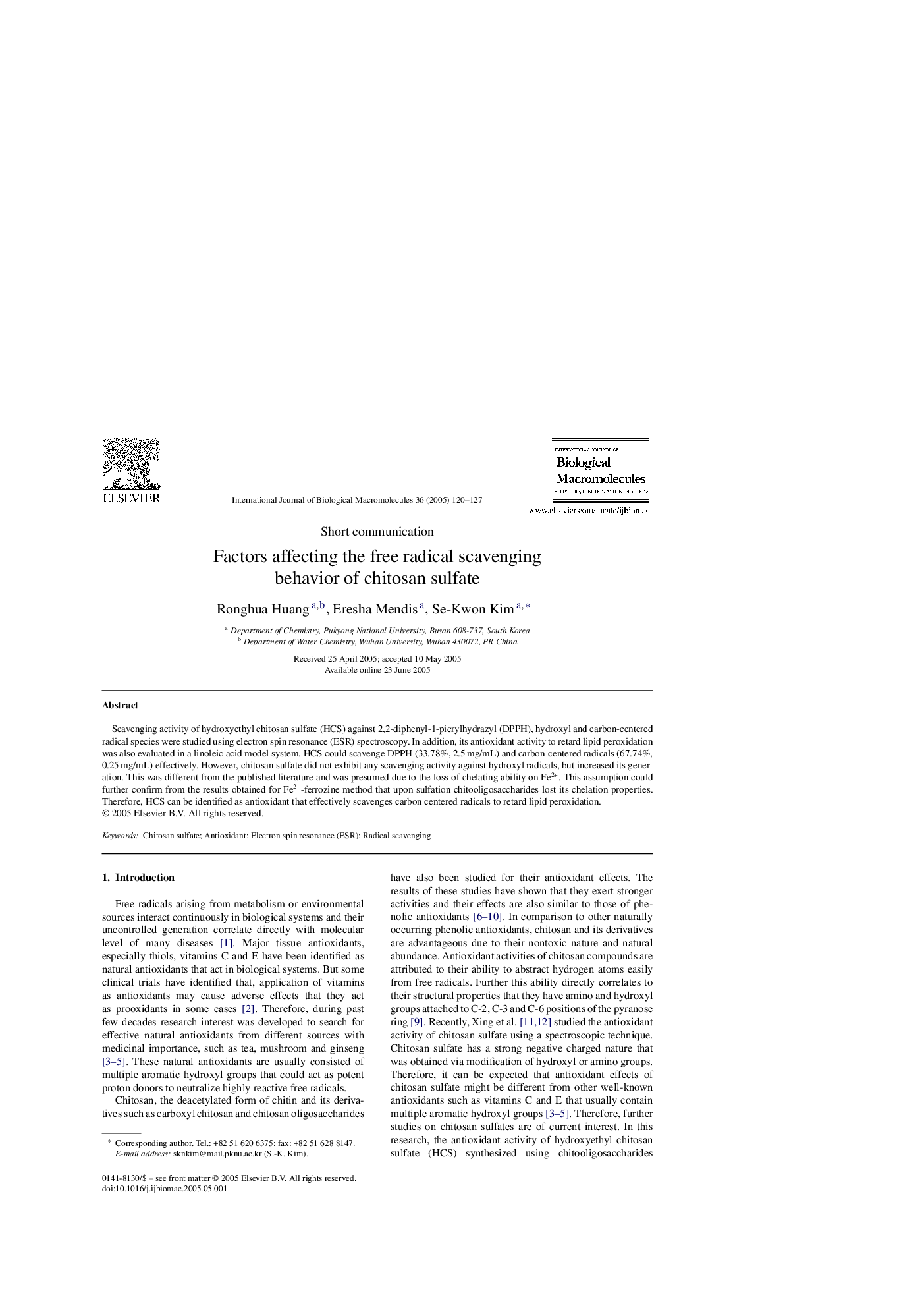| Article ID | Journal | Published Year | Pages | File Type |
|---|---|---|---|---|
| 9890911 | International Journal of Biological Macromolecules | 2005 | 8 Pages |
Abstract
Scavenging activity of hydroxyethyl chitosan sulfate (HCS) against 2,2-diphenyl-1-picrylhydrazyl (DPPH), hydroxyl and carbon-centered radical species were studied using electron spin resonance (ESR) spectroscopy. In addition, its antioxidant activity to retard lipid peroxidation was also evaluated in a linoleic acid model system. HCS could scavenge DPPH (33.78%, 2.5Â mg/mL) and carbon-centered radicals (67.74%, 0.25Â mg/mL) effectively. However, chitosan sulfate did not exhibit any scavenging activity against hydroxyl radicals, but increased its generation. This was different from the published literature and was presumed due to the loss of chelating ability on Fe2+. This assumption could further confirm from the results obtained for Fe2+-ferrozine method that upon sulfation chitooligosaccharides lost its chelation properties. Therefore, HCS can be identified as antioxidant that effectively scavenges carbon centered radicals to retard lipid peroxidation.
Related Topics
Life Sciences
Biochemistry, Genetics and Molecular Biology
Biochemistry
Authors
Ronghua Huang, Eresha Mendis, Se-Kwon Kim,
